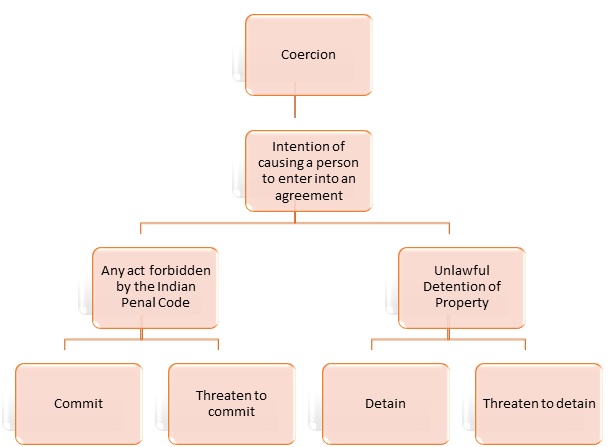Liabilities in Criminal Law
Definitions of Liabilities
According to Markby,
“the word 'liability' is used to describe the condition of a person who must has to perform whether that duty is a primary or secondary or sanctioning one”.[1]
According to Sir John Salmond,
“Liability
or responsibility is the bond of necessity that exists between the wrongdoer
and the remedy of the wrong. This vinculum Juris is not one of mere duty or
obligation; it pertains not to the sphere of ought but to that of must”.[2]
Austin prefers to use
the term 'imputability' to 'liability'. According to him,
“Those certain forbearances, Commissions, or acts, together with such of their consequences, as it was the purpose of the duties to avert, are imputable to the persons who have forborne omitted or acted”.[3]
Liability is one of the important aspects of regulating society. In the article “What is Crime?” we referred to the theories of Hobbes, Locke, and Rousseau that describe one of the reasons for the formation of the state to be reduction/removal of crime from society. To implement this duty, the state has imposed various liabilities on the offender/wrong-doer. Violation of laws formulated by the state or by the judiciary through precedents will result in liability. Where there is a wrong there is a liability. Crimes are wrongs affecting the society at large for which liability is the result imposed by the state. Liability can be measured by the intention or knowledge of the offender.
1. Vicarious
Liability
According
to Salmond, “In general, a person is responsible for his own acts, but there
are exceptional cases in which the law imposes on him vicarious responsibility
for the acts done by others, however blameless himself.”[4]
According
to Black’s Law Dictionary, the adjective ‘vicarious’ is defined as “performed
or suffered by one person as a substitute for another” i.e. an indirect performance
or a surrogate action.
Vicarious
liability is generally known in law or torts and criminal law where a
supervisory party (such as an employer/principal/master) has to bear for the
actions or the conduct of their subordinate or associate (such as an
employee/agent/servant) based on the duty of the supervisory and subordinate
party and on the relationship between the two parties.
For
example, a master would be liable for a servant’s action if the criminal act
done was under the course of duty of the servant and not for actions that the
servant commits outside the purview of duties authorised to him. If a servant
was told to drive a car at a speed of 120 Km/hr on a highway which leads to an
accident, though the master was not driving the car herself, she would be held
liable.
Why
is vicarious liability is imposed? (General Law)
1.
The first reason is that
an act committed by the servant is considered to be done by the master herself
provided that the action was under the course of duty of the servant and was
done with the permission of the master. For example, if a driver was driving
the car on a Sunday when he was given a holiday and therefore was not
authorised to drive the car shall himself be liable for the accident caused due
to over speeding. But if he was doing it on a weekday when was asked by the
master to do so, the master will be considered to commit the act indirectly
through her servant.
2.
Since the master has
appointed the servant to perform a certain task on his behalf then it is
the duty of the master to take all the reasonable care and precaution to
avoid any mishappenings in society. Therefore, if the master fails to appoint such a
conscious person, he would be liable for the actions of his servant appointed
by him.
3.
It is crucial to
understand that for any act done by the servant the master enjoy its results or
fruits. Since it is the master who would enjoy the fruits due to the
completion of the task given to the servant, it should be the master who should
be held liable for the apprehensions caused by the servant.
Similarly,
the Principal or owner or employer is liable for any act committed by his agent
or independent contractor or an employee during the course of employment.
Vicarious
liability is a legal theory of liability that is based on “respondent superior”
principles that are concerned with distributing loss caused by the tortious
acts. Under this doctrine, individuals can be made vicariously liable for
wrongful acts committed by someone because they helped in furtherance of a
crime in some way like abetting or aiding criminal activities.
For
instance, if a robbery in a jewellery store had a driver who even though did
not participate in the actual commission of the crime but was helping in the
completion of the task shall be held vicariously liable as well as jointly
liable. The essence of vicarious liability in criminal law can be simply
understood as when a crime has committed a person can be held liable as the
principal offender i.e. the perpetrator of the crime whose act was committed by
someone else. It is believed that a person committing an offence merely on the
saying of the other would not be innocent and thus should also be held liable.
Unlike
in the law of torts, in criminal law, a master is not always held vicariously
liable for the actions of his servants or agents on the principle of respondent
superior. This is to state that in criminal law it is necessary that the person
who has committed the crime should only be held liable.[5]
However, IPC, 1860 makes a departure from the general rule in a few cases, on
the principle of respondent superior.[6]
In such a case a master is held criminally liable under sections 154 to 156
of the IPC for acts committed by his agents or servants.[7]
2. Strict
Liability
A wrong-doer is responsible
for his actions but there are certain exceptions to this rule that includes a man
being liable for wrongful intent or negligence. This is known as wrongs of
strict liability.
According
to Black’s Law Dictionary, “Strict Liability does not depend on
actual negligence or intent to harm, but that is based on the breach of an
absolute duty to make something safe.”
One of the essential element of crime i.e. Mens
Rea is applied to all criminal offences
except a few. In these exceptions, though there is no mens rea involved
the law provides for a liability of the offender for his criminal act,
altogether independent of any criminal intention or wrongful state of mind or
culpable negligence.[8]
Such offences are considered as offences of strict liability or absolute
liability.
A criminal act that does not require a guilty mind can be divided under 3
categories:
1.
First, acts that are not
criminal in its actual sense, but are considered as quasi-criminal acts and are
prohibited in the interest of the public. For example, social and economic
offences like that relating to drugs and food or weights and measures, breaking
of traffic rules, growing of weed, etc.
2.
Second, cases of public
nuisance, libel, and contempt of court, etc.
3.
Third, cases in which,
although the proceeding is criminal, it is a mode of enforcing a civil right,
for example, cases of violations of municipal laws and regulations, etc.[9]
“The doctrine of strict liability is a departure from the common law principle of
actus non facit reum, nisi mens sit rea and is, therefore, vehemently
criticised. The jurists have gone to the extent of saying that strict liability
offences are not criminal offences. Professor Jerome Hall has preferred to call
strict liability offences as offences relating to “economic law” or “administrative
regulations”, instead of penal offences.”[10]
What
is important to evaluate is the intensity of the crime, strict liability
offences though do not consider mens rea but are important for the social
welfare. Considering the fact that these acts might be harmful to the offender
itself and in such cases the state has to protect its most important asset i.e.
Human. And this is the reason why strict liability is considered for certain
acts which though might not involve mens rea but may harm people in the
long run or intensively in a shorter phase. For example, food or drug crimes
are there to help the people and their health, since people are the basis of
any state it is important to protect the health of the living.
Important:
The statutory offences that do not include
mens rea shall not be subject to strict liability on the ground that such laws
are enacted by the state itself and are there to in fact preserve the social
and economic interest of the society. Therefore, strict adherence to such laws
is necessary and the liability for non-performance is also necessary.
3.
Absolute Liability
The
rule of absolute liability is similar to the rule of strict liability with certain
amendments. Absolute liability applies to every act without any limitation
or exception and held the individual liable for any fault. This rule of
Absolute liability was accepted by the Supreme Court in the case of M.C. Mehta
V UOI[11]
and the very known Bhopal Gas Leak[12]
case. In these cases, the SC maximised the limit of the rule of strict
liability laid under Ryland V. Fletcher[13]
also known as the rule of Ryland V. Fletcher.
The
difference between Strict and Absolute liability rules was laid down by the
Supreme Court in M.C. Mehta v. Union of India, which are as follows:
1. Firstly, Absolute
liability shall be imposed only on those industries that were involved in
hazardous and inherently dangerous activities.
2. Secondly, the actual
escape of the dangerous product shall not be necessary i.e. any person hurt by
the act of those industries outside or inside the premise can claim absolute
liabilities.
3.
Thirdly, the rule of
Absolute liability does not have any exception.
4. Fourthly, the Rule of
Ryland V Fletcher i.e. strict liability apply only to the non-natural use of
land but the rule of absolute liability applies to even a natural use of land.
If any harmful gas is the natural use of land and if it escapes then absolute
liability should be imposed.
5. Though the damages depend
on the magnitude and financial capacity of the institute, there is an absolute
liability of the damage to pay on the institute.
The
Supreme Court in the case of MC Mehta held
"Once
the activity carried on is hazardous or inherently dangerous, the person
carrying on such activity is liable to make good the loss caused to any other
person by his activity irrespective of the fact whether he took reasonable care
while carrying on his activity is by far the more appropriate and
binding."[14]
The
scope of the Rule of Absolute Liability has widened to include not only public
negligence or fault but even personal injuries caused due to the negligence of
neighbour and also the non-occupier of the land.[15]
4.
Joint Liability or Constructive Liability
According
to Black’s Law Dictionary,
“Joint
Liability may be apportioned either among two or more parties or to only one or
a few select members of the group, at the adversary's discretion. Thus, each
liable party is individually responsible for the entire obligation, but a
paying party may have a right of contribution and indemnity from non-paying
parties.”[16]
A
crime is an act that can be committed by an individual or more persons (S.11
of Indian Penal Code, 1860 defines persons as “any Company or Association or
body of persons, whether incorporated or not”). An individual who commits
the crime is held responsible in accordance with the nature of the crime and
subject to defences if any. However, it might be difficult to decide the
punishment if the criminal offence is committed by several persons in different
capacities.
For
example, a murder is committed by 6 people i.e. A, B, C, D, E, and F. A planned
the murder and was not present at the crime scene physically, B pulled the
victim by chains to the crime scene, C brought the car for their runaway and a
knife and gave it to D, D blew the victim with various cuts which did not lead
to his death, E threw a rock at the victims head which head to heavy blood loss
and F finally took the knife from D’s hand and slit the victim's throat. In such
cases, a distinction is drawn between the acts of each of such individuals
according to their mode and degree of participation or involvement in the
commission of the offence for ascertaining guilt and awarding punishment. Such
persons may broadly be classified into principals and abettors.[17]
According
to English law, criminals are classified into four categories on the basis of
their participation in the act. These are:
1. principal in the first
degree, the actual perpetrator of the crime,
2. principal in the second
degree, the person who is present at the scene of occurrence assists and aids
in the commission of a crime,
3. accessory before the fact
(commission of the crime) and
4. accessory after the fact.[18]
A
person who either actually commits the criminal act or aids the commission of
the crime while being present at the crime scene, such a person is known as a
principal. The principal is held liable as the actual perpetrator under the
specific provisions of under joint, or constructive liability.
A
person who directly or indirectly assists, aids, counsels, procures or
encourages another to commit a crime is called an Abettor.[19]
“Accessories before the fact or after the fact” is similar to that of
abettors i.e. one who knows the fact that a crime was committed intentionally
protects or gives shelter in order to help the culprit to escape the liability
of his actions.[20]
However,
under Indian law, there is no such distinction between the offenders as the law
believes that there is no practical utility (after the commission of the crime)
of such a classification since the punishment prescribed for all the categories
of criminals is the same.[21]
In
cases where one cannot apportion respective criminal guilt on the offenders, al
the offenders are held jointly liable. This is based on the fact that the act
of the abettors or the presence of the accomplice gives encouragement or
support to the person who is actually committing the crime.[22]
An important thing is that the participants shall be held liable equally since
even though one person was actually committing the crime the intention of all
the other participants was similar to that of the principal and he was doing
the act on behalf of those participants also.
The
provisions related to joint liability have been elaborately dealt with in sections
34-38, 120A, 120B, 149, 396 and, 460 of the Indian Penal Code, 1860. These
provisions may be classified into three categories:
1. when the offence is
committed with the common intention of the group (sections 34-38);
2. when the accused is a
member of a conspiracy to commit an offence (sections 120A, 120B);
and
3. when the offence is
committed with the common object of an unlawful assembly (section 149).[23]
BY,
LAWVASTUTAH
[1] SRD Notes, Definitions of Liabilities, https://www.srdlawnotes.com/2018/02/what-is-liability-and-what-are.html
(Last Visited at 18th September 2020).
[2]Glanville L. Williams ed., 10th ed. 1947.
[3] Banshlochan Prasad, Jurisprudence of Liabilities, http://www.ngbu.edu.in/newsite/Ontuto/BALLB6SEM_Concept%20of%20Liabilities_Jurisprudence_banslochan.pdf
(Last Visited at 18 September 2020).
[4]Vicarious Liability including State
Liability, https://indianlegalsolution.com/vicarious-liability-including-state-liability/#:~:text=Vicarious%20Liability%20is%20also%20called,%2C%20however%2C%20blameless%20himself.%E2%80%9D (Last Visited at 18 September 2020).
[5]KD Gaur: Criminal Law-Cases and Materials, 9th ed.
[6]Gour Hari Singh, The Penal Law of India, vol II, 11th Edn, 2000, pp
1467-1472.
[7]KD Gaur: Criminal Law-Cases and Materials, 9th ed.
[8]See State of Maharashtra v Mayer Hans George, AIR 1965 SC 722: [1965]
1 SCR 123; Warner v Metropolitan Police Commr, [1968] 2 All ER 356; Indo-China
Steam Navigation v Jasjit Singh (Collector of Customs), AIR 1964 SC 1140:
[1964] 6 SCR 594.
[9]Sherras v De Rutzen, [1895] 1 QB 918, G Williams, Salmond on
Jurisprudence, 11th Edn, 1957, pp 408-409; Smith and Hogan, Criminal Law, 5th
Edn, 1983, pp 86-92; Halsbury’s Laws of England, 3rd Edn, pp 273-74; JLJ
Edwards, Mens Rea in Statutory Offences, London: Macmillan, 1955, pp 84-110.
[10]KD Gaur: Criminal Law-Cases and Materials, 9th ed; See Jerome Hall,
General Principles of Criminal Law, 2nd Edn, 1960, p 326; Mannheim, (1936) 18
JCL 90.
[11]1987 SCR (1) 819.
[12]AIR (1989)(1)SCC 674.
[13]1866 L.R. 1 Ex.256. 1868 L.R. 3 HL 330.
[14]1987 SCR (1) 819.
[15]J.N. Panday: Law of Torts.
[16]See solidary liability. [Cases: Contracts 181; Negligence 484; Torts
22. C.J.S. Contracts §§ 366, 371; Negligence §§ 154–156; Torts §§ 39–44.] joint liability. Liability shared by two
or more parties. [Cases: Negligence 484; Torts 22. C.J.S. Negligence §§ 154–156;
Torts §§ 39–44].
[17]KD Gaur: Criminal Law-Cases and Materials, 9th ed.
[18]Ibid.
[19]Ibid.
[20]See Indian Penal Code, 1860, sections 130, 136, 157, 201, 212, 216:
See KD Gaur, A Textbook an Indian Penal Code, 3rd Edn, 2004, pp 159-174;
Commentary under sections 107- 120, IPC, 1860.
[21]Ibid.
[22]Gour Hari Singh, The Penal Law of India, vol I, 11th Edn, 2000, pp
969-995. See VI ASIL, 1970, pp 480-82; VIII ASIL, 1972, pp 58-60.
[23]Ratanlal and Dhirajlal, The Law of Crimes, 24th Edn, 1997, pp 396-414.



Comments
Post a Comment